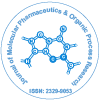A Schematic Approach for Drug Discovery While Using Plant Sources
Received Date: Aug 31, 2022 / Accepted Date: Sep 23, 2022 / Published Date: Sep 28, 2022
Abstract
The combination of declining numbers of new drug approvals and rising prohibitive costs poses serious challenges to drug discovery. The advent of combinatorial chemistry has given rise to renewed hope of increasing the success rate of new chemical entities (NCEs). But even this scientific development has not improved the success rate of new drug discovery. This scenario has allowed us to develop a new approach to integrated drug discovery where Ayurvedic wisdom can interact with drug discovery from botanical sources. The first step in drug discovery involves NCE identification. NCEs can be obtained by chemical synthesis or isolated from natural products by biologically active fractionation. The source of many new drugs and active ingredients in pharmaceuticals comes from natural products. A starting point for discovering new plant-based medicines is to use Ayurvedic wisdom, traditional documented uses, undocumented tribal uses, and extensive literature review to identify suitable candidates. A frequency analysis of the components of anciently documented formulations and an analysis of their Ayurvedic properties will allow the selection of suitable candidate plants for fractionation based on their biological activity. We can give you a complete idea about the dominance of Vedic properties. Integrating the wisdom of Ayurveda into pharmaceutical research requires a paradigm shift in the extraction process from sequential to parallel extraction. Bioassay-based fractionation of identified plants yields standardized extracts or isolated bioactive pharmaceutical compounds as new drugs. This integrated approach improves drug discovery success rates and saves cost and time.
Citation: Jager W (2022) A Schematic Approach for Drug Discovery While Using Plant Sources. J Mol Pharm Org Process Res 10: 149.
Copyright: © 2022 Jager W. This is an open-access article distributed under the terms of the Creative Commons Attribution License, which permits unrestricted use, distribution, and reproduction in any medium, provided the original author and source are credited.
Share This Article
Recommended Journals
Open Access Journals
Article Usage
- Total views: 1232
- [From(publication date): 0-2022 - Apr 05, 2025]
- Breakdown by view type
- HTML page views: 898
- PDF downloads: 334
